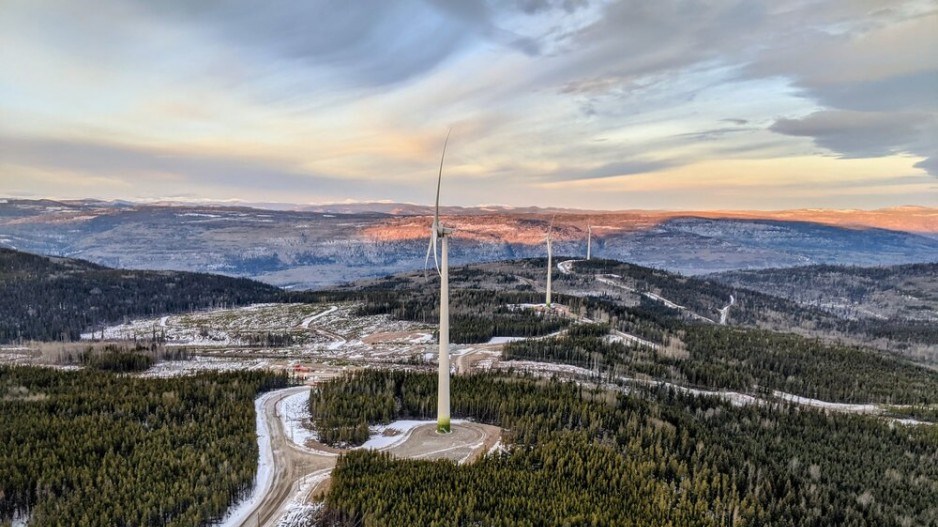Canada is among a handful of countries that have set legally binding emission reduction targets. But when it comes to achieving its long-term net-zero targets, experts have “low confidence” the country will succeed.
The analysis, published in the journal Science Thursday, ranks 35 major emitters across the planet and how likely they are at following through on their plans to achieve net-zero emissions — the point where societies absorb as much carbon pollution as they produce.
“Canada has a solid legal framework, but it’s not implementing its policies fast enough,” said Taryn Fransen, a co-author and director of climate research at the World Resources Institute in Washington, D.C.
“When you project out emissions into the future only considering those domestic policies in place now, Canada is not reducing emissions fast enough.”
At a global level, the study ranked 90 per cent those emission reduction targets as having “lower” or “much lower” odds of success.
“The world is still on a high-risk climate track, and we are far from delivering a safe climate future,” said Joeri Rogelj, lead author and a professor at Imperial College London.
Fransen said there were some positive signs. Countries like Chile, Colombia and Nigeria were found to be creating legal frameworks and early plans to reduce emissions. If enacted, the plans would come at a stage in their economic development that would help them avoid decades of heavy emitting.
'Best estimate' heating would breach 2 degrees Celsius limit
The study looked at a number of scenarios, nearly all considering what policies are already on the books to reduce emissions by 2030 as well as how warming might continue by the end of the century.
The modelled “best estimate” shows the world producing roughly 50 gigatonnes of carbon pollution annually by 2100 as it continues to warm into the next century. That path heats the planet 2.6 degrees Celsius above pre-industrial levels — well above the 1.5 C and later 2 C warming limits countries committed to through the Paris accord.
And while that future has not been locked into place, the authors say that “concrete and credible efforts” to achieve low-temperature projections in the range of 1.7 C to 2.1 C of warming “remain a long way off.”
When the modellers looked at the likelihood of whether big emitters could achieve both current emission reduction plans and long-term targets that had the best chance of succeeding, they found the world would have a one-in-three chance of warming 2.6 C and a one-in-10 chance of warming 3.2 C.
Even under the most optimistic scenario, the researchers found the range of warming could exceed the 2 C limit countries have already agreed to.
What politicians and policymakers need to understand, noted the study’s authors, is that global temperature will exceed the Paris Agreement limits if only the highest-confidence net-zero targets are met.
“What people are hearing about climate change can be confusing sometimes,” Fransen said. “Whether you believe countries will or will not achieve these targets makes all the difference in meeting the Paris climate agreement.”
“Unfortunately, what we found, is not many of those targets have that legal backing... Some of them are a lot more credible than others.”
Legally binding emission targets also need short-term execution plans
To avoid the worst planet heating, they say individual countries need to build legally binding net-zero targets into domestic legislation, and then formulate and execute sector-specific plans to drive down emissions soon.
Jurisdictions that have already started on that path include Canada, Chile, Australia, Japan, the United Kingdom, Nigeria and the European Union. Most others, however, have failed to enact laws to begin reducing their emissions.
Even those who have crafted legally binding targets will likely fail to get them off the ground without near-term plans to achieve them.
“It’s not just a prime minister or president making a promise,” Fransen said.
In Canada, for example, the study found that while the federal government enshrined emission targets into law in 2021, it’s not clear the country’s plans would put it on a clear downward path to meet its goals.
The analysis found Canada’s long-term strategy, submitted to the United Nations in October 2022, “does not outline specific policies and measures” and achieving its net-zero target was given a “lower” confidence rating.
Why Canada and smaller emitters matter to global warming
Canada’s domestic emissions account for 1.6 per cent of the global total, making it a top-10 emitter. The country’s exports, which include vast amounts of oil and gas and are not counted, add up to much more.
Canada has played an outsized role as a historical carbon emitter. It’s the only top-10 emitter with a population under 100 million people, and remains the highest per capita of greenhouse gases in the world, according to Jason Dion, senior research director at the Canadian Climate Institute.
Dion says that all countries — including Canada — have a moral obligation to show leadership, including to the small emitting countries of the world who together account for 30 per cent of global emissions.
“Every megaton matters,” Dion told Glacier Media last month. “If you added up all the countries whose emissions are smaller than Canada's, it adds up to more than China’s.
“So the idea that small countries with you know relatively small emissions as an overall share are irrelevant? It’s just totally inaccurate.”




